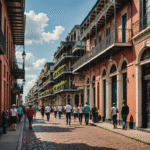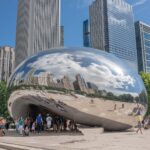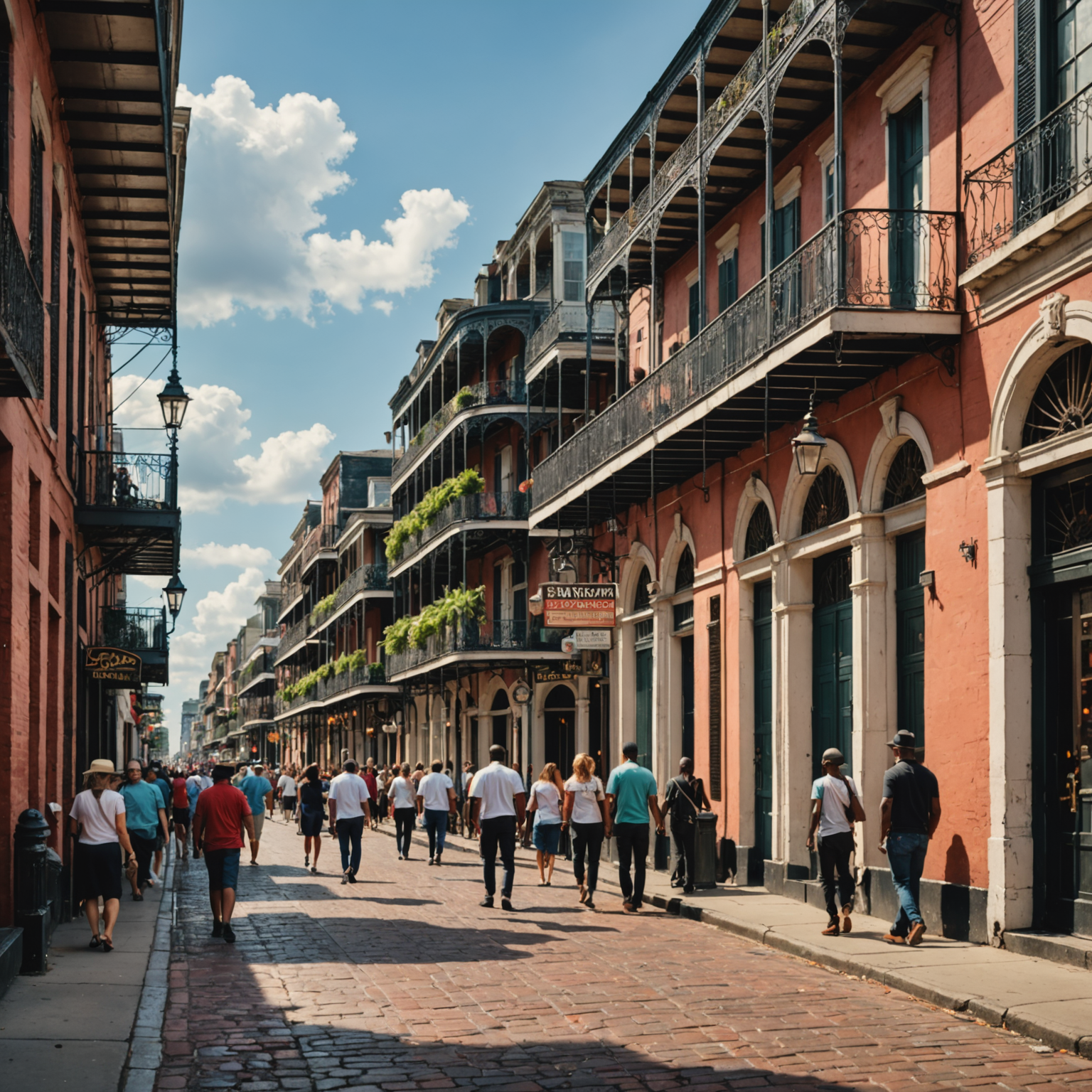
Experience New Orleans of Louisiana:
Vibrant Music Scene:
New Orleans is the birthplace of jazz, with a rich musical heritage that permeates the streets. Venues like Preservation Hall offer intimate performances featuring some of the best local musicians. The city also hosts numerous festivals celebrating various genres, from blues to funk, making it a hub for music lovers.Culinary Delights:
The culinary scene in New Orleans is a melting pot of flavors. Signature dishes like gumbo (a savory stew) and jambalaya (a rice dish with meat and seafood) reflect the city’s diverse cultural influences. Beignets, powdered sugar-covered pastries, are a must-try at Café du Monde. The city is also known for its Creole and Cajun cuisines, offering a unique gastronomic adventure.Rich History:
The French Quarter, the oldest neighborhood in the city, features stunning architecture, including wrought-iron balconies and colorful façades. Historic landmarks like Jackson Square and St. Louis Cathedral tell the story of New Orleans’ colonial past. Visitors can explore the Cabildo and the Presbytère to learn about the city’s history, including its role in the Louisiana Purchase.
Festivals and Events:
New Orleans is famous for its vibrant festivals. Mardi Gras, celebrated with parades, elaborate floats, and masquerade balls, attracts visitors from around the globe. The New Orleans Jazz & Heritage Festival showcases the city’s musical talent and cultural diversity, featuring local artists and food vendors.Unique Culture:
The city’s culture is a rich tapestry woven from French, African, Spanish, and Native American influences. This is evident in its music, food, and art. The local dialect, known as “Yat,” and the celebration of traditions like second-line parades highlight the city’s unique identity.Scenic Riverfront:
The Mississippi River is central to New Orleans’ charm. The riverfront area offers beautiful parks and walkways, perfect for leisurely strolls. Visitors can take riverboat cruises for a scenic view of the city’s skyline and learn about its history along the way.
Haunted Tours:
Known for its haunted history, New Orleans offers ghost tours that explore the city’s spooky legends and haunted sites. Visitors can learn about the infamous LaLaurie Mansion and the haunted history of the French Quarter, blending history with the thrill of the supernatural.Art and Shopping:
Local galleries and shops in the Frenchmen Street area and the Warehouse District feature works by emerging and established artists. Visitors can find unique handmade crafts, jewelry, and artwork that reflect the spirit of New Orleans, making for memorable souvenirs. The monthly Art Walks also provide an opportunity to explore the vibrant art scene.
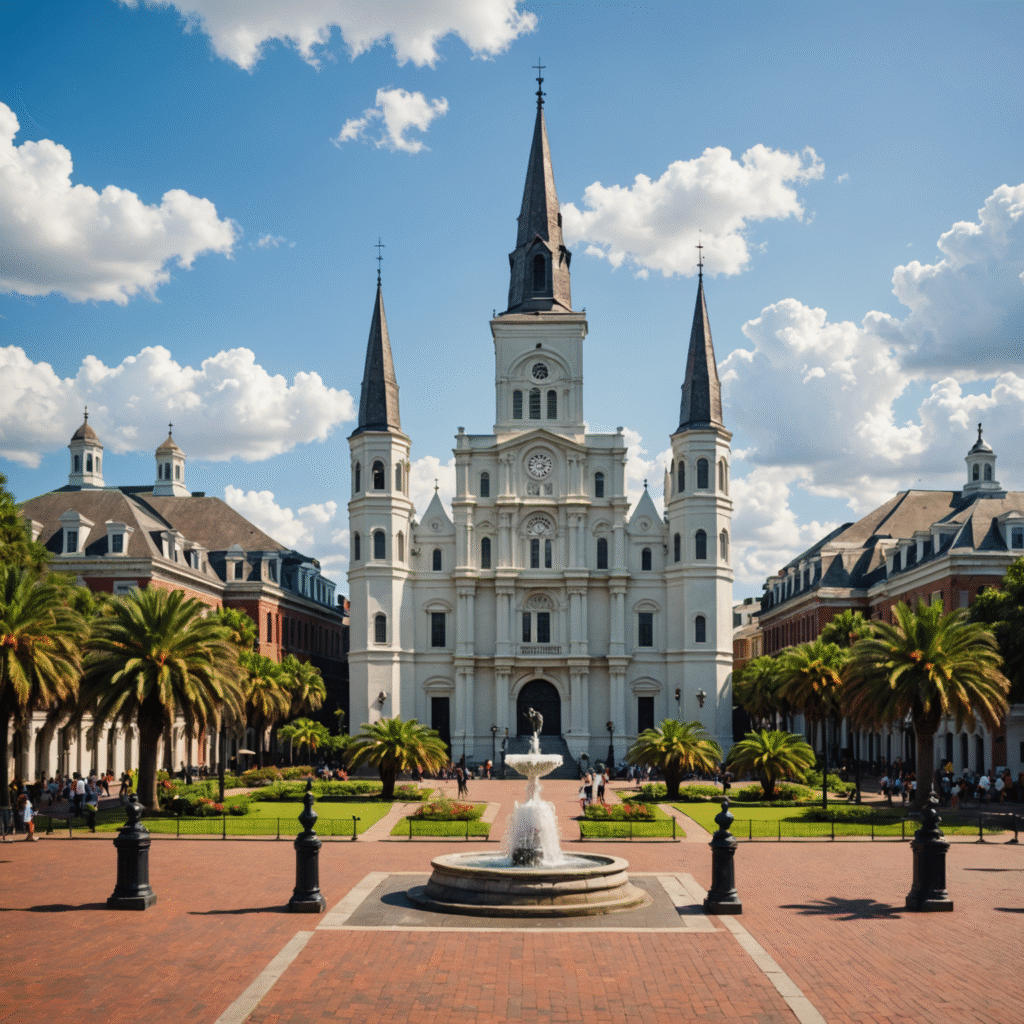
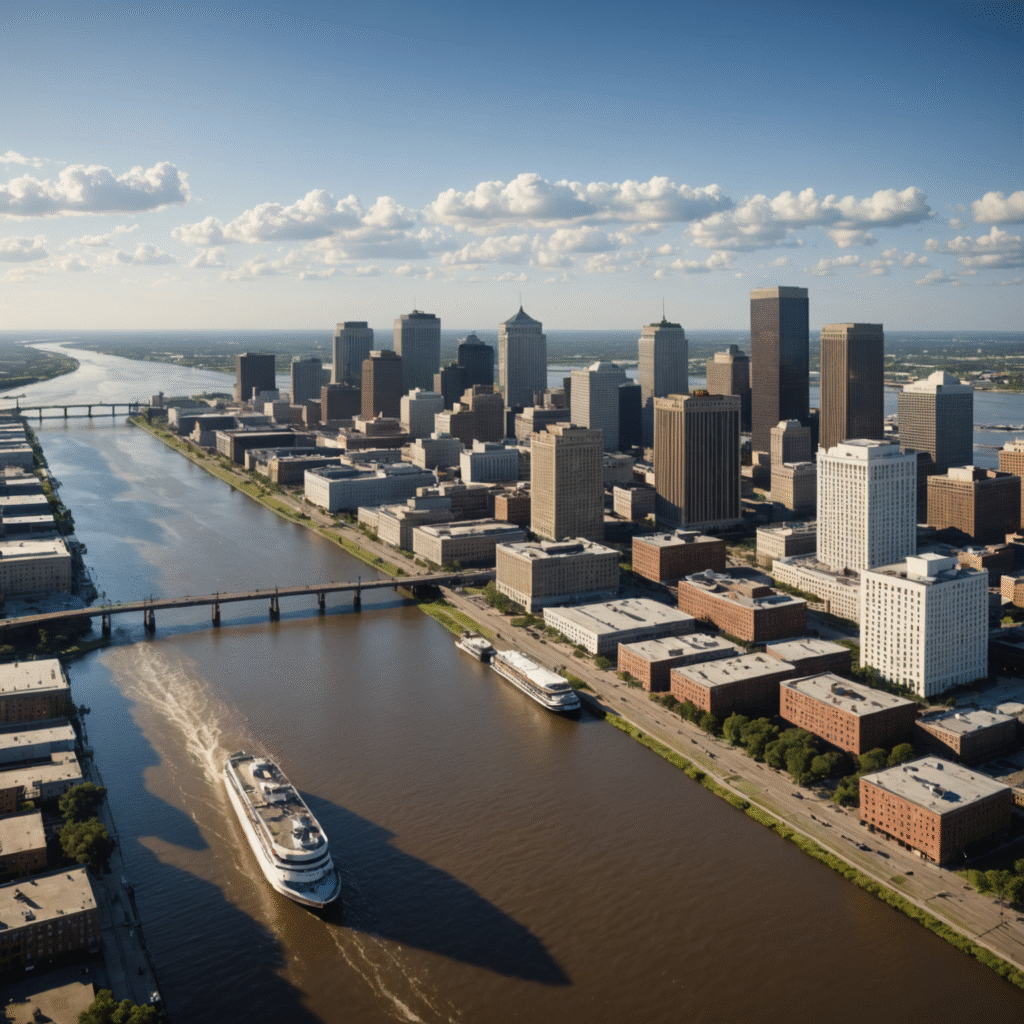
🌴 Natural Wonders of Louisiana:
Bayous and Swamps:
Louisiana’s bayous and swamps are a unique ecosystem teeming with life. Glide through these winding waterways on a guided airboat tour, where you can spot alligators basking in the sun and a variety of exotic birds, such as herons, egrets, and kingfishers. The lush vegetation, including cypress trees draped in Spanish moss, creates a mystical atmosphere. These tours often include insights from knowledgeable guides about the delicate balance of this ecosystem and its importance to the local culture.
Atchafalaya Basin:
The Atchafalaya Basin, the largest swamp in the U.S., covers approximately 1.4 million acres and is a biodiversity hotspot. It offers a stunning landscape of wetlands, forests, and waterways, making it a paradise for outdoor enthusiasts. Visitors can kayak through serene backwaters, fish for bass and catfish, or capture breathtaking wildlife photographs. The basin is home to over 200 species of birds and a variety of mammals, including deer and black bears, providing ample opportunities for wildlife observation and eco-tourism.Louisiana’s Rivers and Lakes:
Louisiana boasts an intricate network of rivers and lakes that enhance its natural beauty. The mighty Mississippi River, one of the longest rivers in North America, is central to the state’s identity. Scenic cruises along the river offer views of historic plantations, charming towns, and vibrant wildlife. For a more tranquil experience, explore the state’s numerous lakes, such as Lake Pontchartrain and Caddo Lake, where fishing, boating, and picnicking are popular activities. These waterways provide a serene escape into nature, with opportunities for birdwatching and enjoying the picturesque landscapes.
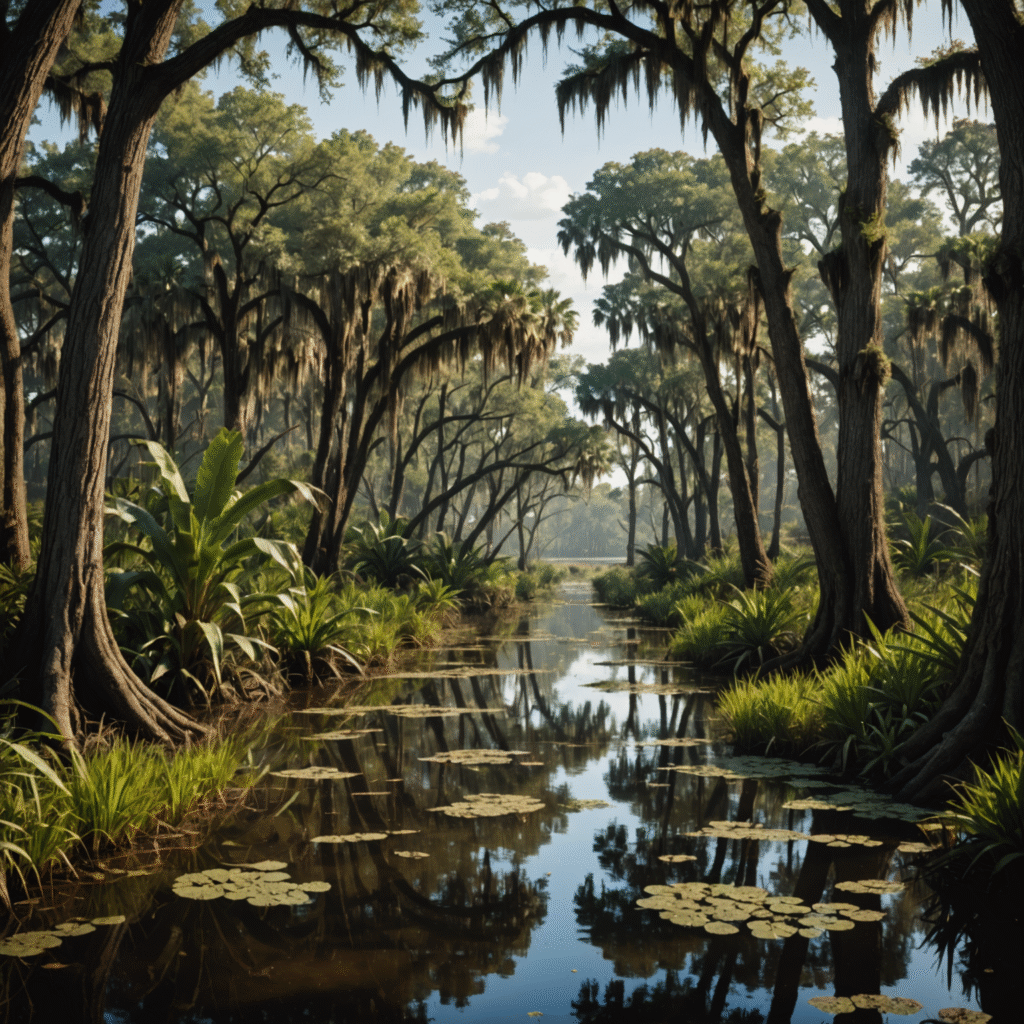
🏛️ Cultural Richness:
Historic French Quarter:
The French Quarter, known as Vieux Carré, is the oldest neighborhood in New Orleans and a UNESCO World Heritage site. Its cobblestone streets are lined with stunning examples of colonial architecture, featuring iconic wrought-iron balconies and colorful façades. As you wander, you’ll encounter lively street performances, local artists showcasing their work, and charming cafés serving beignets and coffee. The atmosphere is electric, reflecting the city’s vibrant culture and diverse history. Notable landmarks include Jackson Square, the St. Louis Cathedral, and the Cabildo, each with stories that reveal the rich tapestry of New Orleans’ past.Plantation Tours:
Louisiana’s plantation tours provide a poignant glimpse into the state’s antebellum history. Many historic plantations, such as Oak Alley and Laura Plantation, offer guided tours that delve into the complexities of plantation life, including the experiences of enslaved people and the economic systems that shaped the South. Visitors can explore beautifully preserved homes, lush gardens, and learn about the agricultural practices that sustained these estates. These tours foster a deeper understanding of the cultural and historical significance of the plantations, highlighting both their beauty and their darker legacies.
Museums and Art:
Louisiana is home to a wealth of museums that celebrate its diverse heritage. The Ogden Museum of Southern Art showcases a rich collection of Southern art, including works by Louisiana artists that reflect the region’s culture and history. Meanwhile, the National WWII Museum is a powerful tribute to the American experience during the war, featuring immersive exhibits and personal stories that emphasize Louisiana’s role in the conflict. Both institutions are not only educational but also serve as cultural hubs, hosting events, lectures, and workshops that engage the community and visitors alike. These museums highlight Louisiana’s resilience and creativity, making them essential stops for anyone looking to understand the state’s cultural landscape.
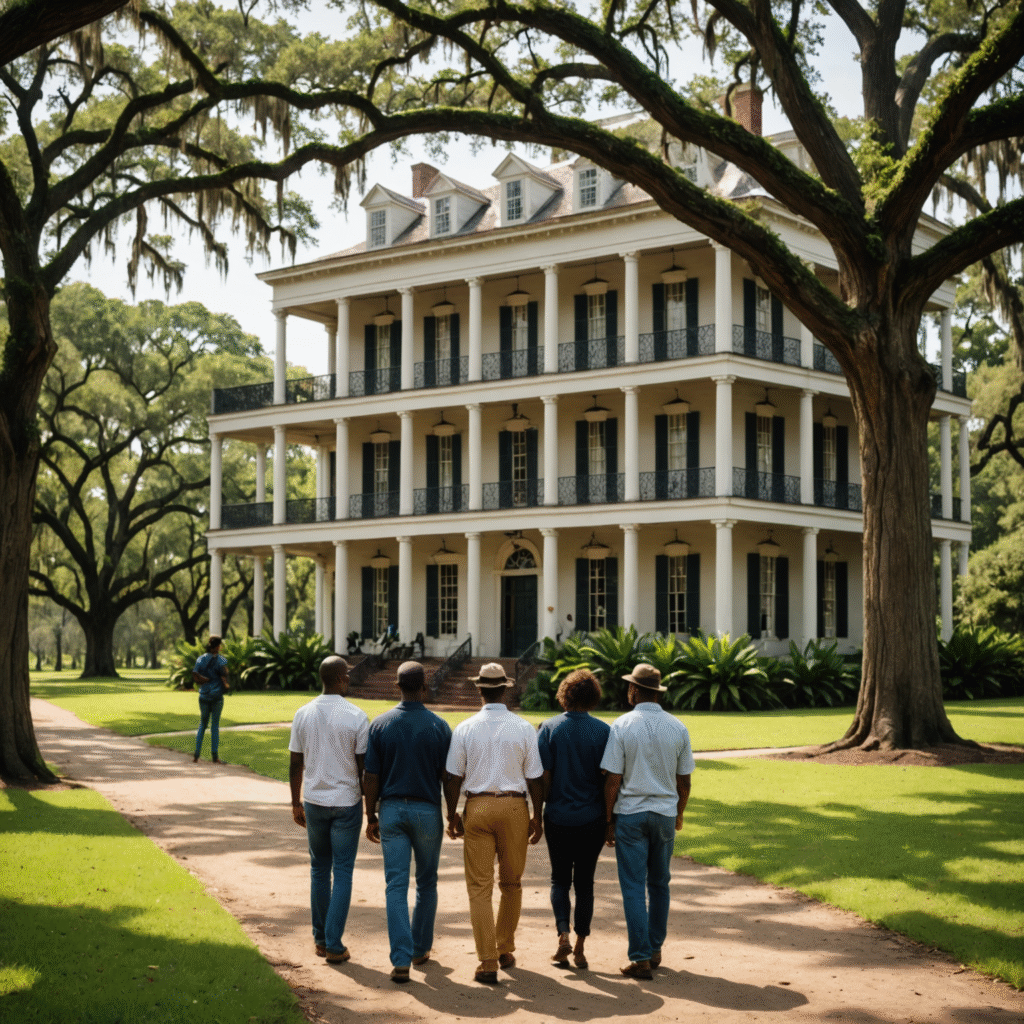
🍴 Culinary Delights:
Creole and Cajun Cuisine:
Louisiana’s culinary scene is a vibrant fusion of Creole and Cajun traditions, deeply rooted in the state’s diverse cultural influences. Signature dishes such as gumbo—a hearty stew made with a rich roux, various meats, and okra—offer a taste of the region’s culinary history. Jambalaya, a flavorful rice dish often featuring shrimp, sausage, and chicken, showcases the blending of cultures. Crawfish étouffée, a rich sauce served over rice, highlights the importance of seafood in local cuisine. Beignets, fluffy pastries dusted with powdered sugar, are a must-try at iconic spots like Café du Monde. Dining experiences range from cozy local eateries to upscale restaurants, each providing a unique ambiance and authentic flavors.
Street Food:
For those seeking authentic tastes on the go, Louisiana’s street food scene is a treasure trove. Po’boys, a type of sandwich typically filled with fried seafood or roast beef, exemplify the region’s casual dining culture. Muffulettas, a round sandwich packed with layers of meats, cheeses, and olive salad, are a New Orleans classic. Food trucks and markets, such as the French Market, serve these delicious bites, allowing visitors to experience local flavors while exploring the city. This vibrant street food culture reflects the community’s love for good food and is often accompanied by live music and lively atmospheres.Festivals Food Booths:
Louisiana’s festivals are not just about music and culture; they also offer an incredible array of culinary delights. The New Orleans Jazz & Heritage Festival, for example, features food booths that showcase the best of Louisiana’s cuisine. Attendees can indulge in a variety of dishes, from traditional gumbo and crawfish boils to sweet treats like king cake. These food booths provide a unique opportunity to sample diverse flavors while enjoying live performances from local artists. The combination of food and music creates a festive atmosphere that celebrates the state’s rich cultural heritage, making festivals a highlight for any food lover visiting Louisiana.
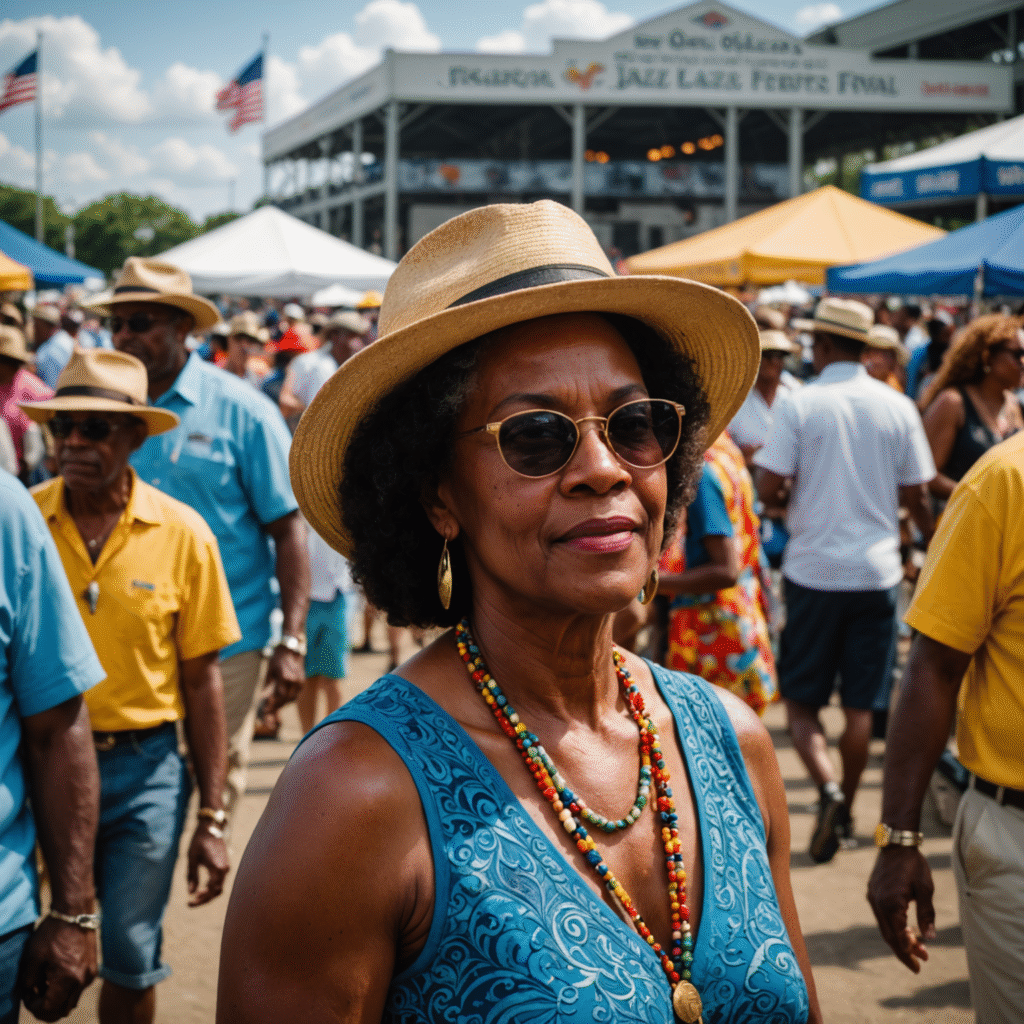
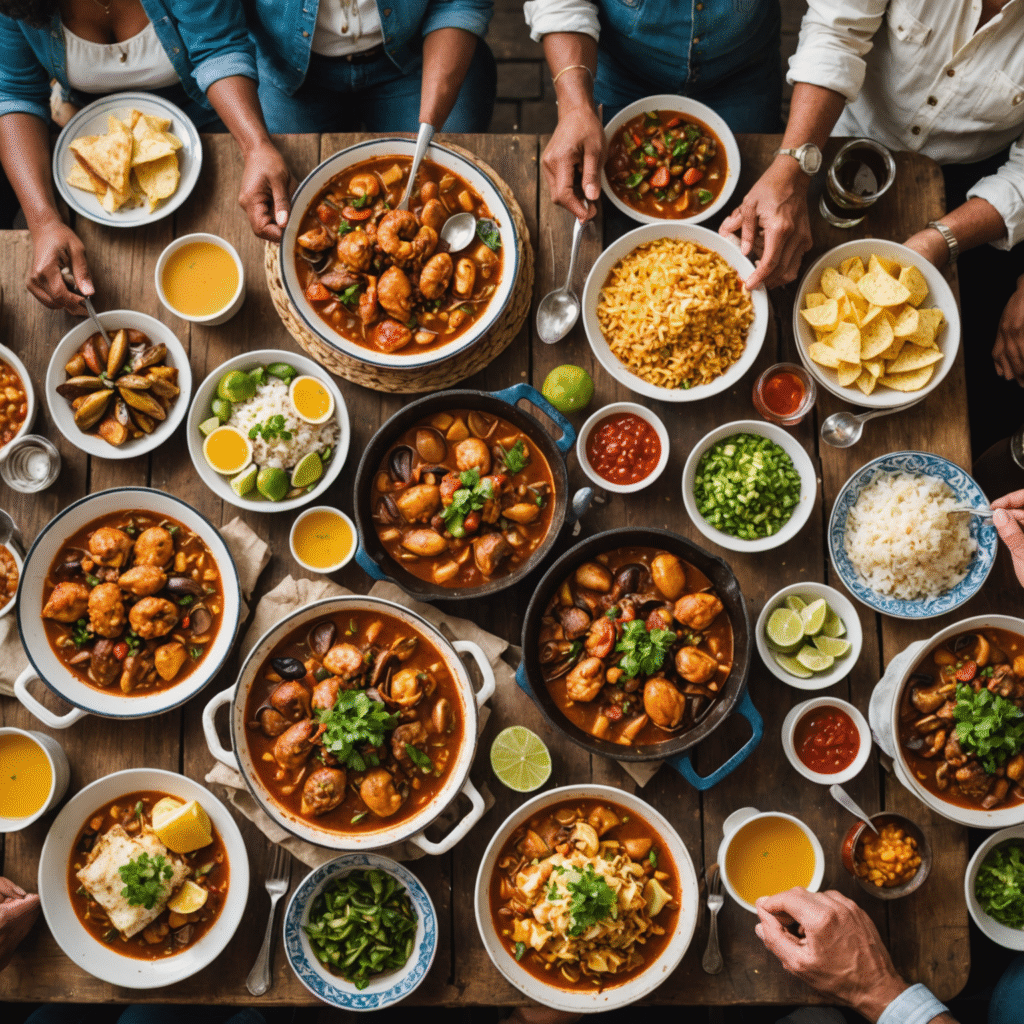
🎭 Unique Experiences at Jazz Fest:
Music Galore:
Jazz Fest is a premier music festival that showcases a diverse lineup of artists across multiple genres. Over eight days, attendees can enjoy performances by renowned musicians like Pearl Jam, Luke Combs, and Lenny Kravitz, along with countless other local and international acts. With 14 stages, the festival offers something for everyone, from jazz and blues to rock and folk. Each performance provides a unique atmosphere, allowing fans to immerse themselves in the vibrant sounds that define New Orleans. The festival not only celebrates established artists but also highlights emerging talents, making it a platform for musical discovery.Local Traditions:
Jazz Fest is steeped in local culture and traditions that enhance the festival experience. One of the highlights is the second line parades, where participants, often dressed in vibrant attire, dance through the festival grounds, celebrating the spirit of New Orleans. Additionally, the Mardi Gras Indian dances showcase the rich heritage of the city’s indigenous and African American communities, featuring elaborate costumes and rhythmic performances. Craft markets scattered throughout the venue offer a chance to engage with local artisans and vendors, providing an authentic glimpse into the culture that shapes New Orleans.Artisan Crafts:
Beyond music, Jazz Fest is a celebration of the arts, featuring a marketplace filled with artisan crafts. Visitors can browse booths showcasing handmade jewelry, intricate paintings, and stunning sculptures, all reflecting Louisiana’s rich artistic heritage. Many artisans share the stories behind their work, offering insights into the cultural influences that inspire their creations. This aspect of the festival allows attendees to take home a piece of Louisiana’s vibrant culture, supporting local artists while enriching their own experience at the festival. The blend of art and music creates a sensory feast that embodies the spirit of New Orleans.
🚶♀️ Adventure Awaits:
Hiking and Biking:
Louisiana’s natural beauty is best experienced on foot or by bike. Kisatchie National Forest offers a variety of trails that cater to all skill levels, winding through lush forests and scenic landscapes. Hikers can enjoy diverse ecosystems, from pine forests to wetlands, and may spot wildlife such as deer, wild turkeys, and a variety of bird species. Other parks, like Fontainebleau State Park, provide trails that lead to stunning views of Lake Pontchartrain. Biking enthusiasts can explore the Tammany Trace, a 31-mile-long trail that runs through picturesque towns and scenic areas, making it ideal for both leisurely rides and more challenging excursions.Water Sports:
Louisiana’s waterways offer a playground for water sports enthusiasts. Kayaking and paddleboarding through the bayous allows adventurers to experience the serene beauty of this unique ecosystem up close. Paddlers can glide past cypress trees and through tranquil waters, often spotting alligators, herons, and other wildlife. Along the Gulf Coast, crystal-clear waters invite activities such as snorkeling, fishing, and jet skiing. Popular spots like Grand Isle and the Breton National Wildlife Refuge provide stunning settings for both relaxation and adventure, making it easy to connect with nature.
Nightlife:
After a day of adventure, Louisiana’s nightlife comes alive, especially in New Orleans. The city boasts a vibrant club scene where visitors can dance the night away. Venues like The Spotted Cat Music Club feature live jazz and blues performances in an intimate setting, while d.b.a. offers a rotating lineup of local and national acts. Maison combines music with a lively atmosphere, featuring everything from funk to soul. In addition to clubs, the Frenchmen Street area is famous for its live music bars, where visitors can enjoy impromptu performances and experience the city’s rich musical culture. The energetic nightlife captures the essence of New Orleans, making it a perfect end to an adventurous day.
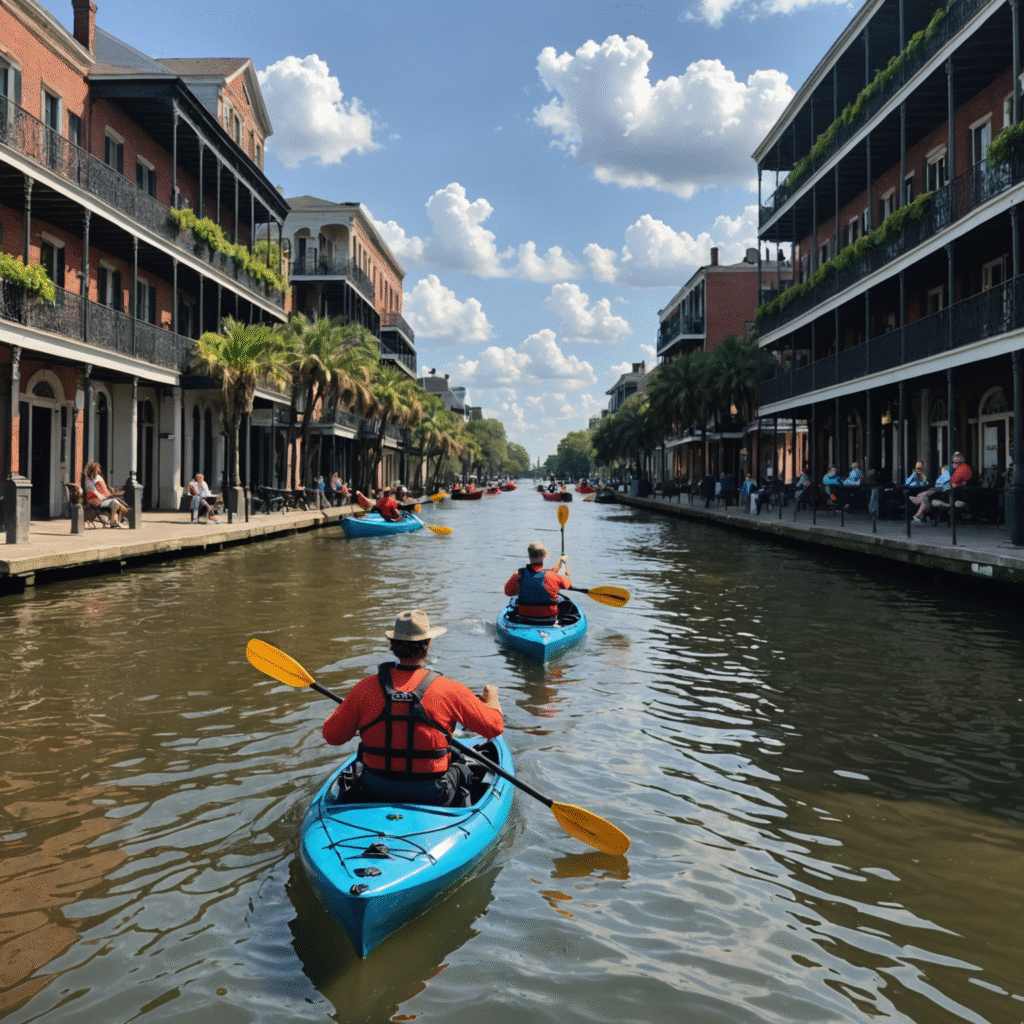
The 5 Best Things for Couples to Experience in Louisiana During Jazz Fest:
Romantic Jazz Nights:
For couples seeking a magical evening, intimate venues like Preservation Hall and Snug Harbor Jazz Bistro offer the perfect ambiance. Preservation Hall, with its rustic charm and rich history, allows you to experience the heart of jazz in a cozy setting. Snug Harbor features an array of talented musicians, where you can enjoy dinner alongside live performances. The intimate atmosphere, combined with the soulful sounds of jazz, creates a romantic backdrop for couples to connect and share in the joy of music.Sunset River Cruise:
A steamboat cruise on the Mississippi River is a quintessential New Orleans experience for couples. As you glide along the river, you’ll be treated to breathtaking views of the city skyline and historic landmarks, all bathed in the warm glow of the sunset. Many cruises feature live music, often reflecting the vibrant jazz culture of the city. Enjoying a drink together on the deck as the sun sets creates a memorable and romantic experience, making it an ideal way to unwind after a day of festivities.Stroll Through the French Quarter:
Hand-in-hand, couples can explore the enchanting streets of the French Quarter. This historic neighborhood is filled with art galleries, antique shops, and charming courtyards that invite leisurely exploration. Stop to admire local artwork, sample beignets at a café, or relax in one of the beautiful parks. The unique architecture and lively street performances add to the romantic atmosphere, making it a perfect spot for couples to soak in the culture and charm of New Orleans.Fine Dining Experience:
For a truly special evening, indulge in a candlelit dinner at renowned restaurants like Commander’s Palace or Cochon. Commander’s Palace, an iconic establishment, offers exquisite Creole cuisine in an elegant setting, complete with impeccable service. Cochon specializes in Cajun flavors, providing a more rustic yet equally delightful dining experience. Both restaurants emphasize locally sourced ingredients and signature dishes, allowing couples to savor the culinary richness of Louisiana while enjoying each other’s company in a romantic atmosphere.Dance at Nightclubs:
The vibrant nightlife of New Orleans is perfect for couples looking to let loose and have fun. Nightclubs like The Maison and Republic NOLA offer an exhilarating atmosphere where the music keeps the energy alive until dawn. Enjoy dancing to live bands or DJs, surrounded by the city’s electric vibe. The shared experience of dancing and enjoying live music creates lasting memories, making it an exciting way for couples to celebrate their time together during Jazz Fest.
A Brief History of Louisiana and the New Orleans Jazz & Heritage Festival:
Early Exploration and Colonial Foundations (17th–18th Century)
Louisiana’s history begins long before European settlers arrived, with indigenous peoples such as the Choctaw and Natchez inhabiting the lower Mississippi Valley for thousands of years5. European exploration began in the late 1600s when French explorers, driven by imperial ambitions and the search for trade routes, ventured into the region. In 1682, the French explorer René-Robert Cavelier, Sieur de La Salle, claimed the vast Mississippi River basin for France, naming it Louisiane in honor of King Louis XIV.
The French established their first permanent settlements toward the end of the 17th century, including Fort Maurepas near present-day Biloxi in 1699 and the city of New Orleans in 1718, strategically located on a crescent bend of the Mississippi River to protect against flooding and facilitate trade. New Orleans quickly became the capital of French Louisiana in 1723, serving as a vital port and cultural hub.
During this period, Louisiana was a melting pot of French settlers, Native American tribes, African slaves, and later Spanish immigrants, including Isleños and Malagueños, who arrived during Spanish rule (1769–1803). The blending of these diverse peoples laid the foundation for Louisiana’s unique Creole culture, which would profoundly influence its music, cuisine, and traditions.
Transfer of Power and the Louisiana Purchase (1763–1812)
Following the French and Indian War (Seven Years’ War), the 1763 Treaty of Paris dramatically reshaped Louisiana’s governance. France ceded the territory east of the Mississippi River (except New Orleans) to Britain, while Spain took control of the rest, including New Orleans. Spanish rule brought economic growth and cultural development, further enriching Louisiana’s complex identity.
In 1800, under the Treaty of San Ildefonso, Spain secretly returned Louisiana to France. Napoleon Bonaparte initially had grand plans to rebuild a French empire in the Americas but abandoned these ambitions after the costly failure to suppress the Haitian Revolution. Consequently, in 1803, Napoleon sold Louisiana to the United States for $15 million in the historic Louisiana Purchase, doubling the size of the young nation and securing control over the vital port of New Orleans26.
Louisiana officially became the 18th U.S. state in 1812, with New Orleans remaining a cultural and economic centerpiece. The state’s population was a diverse mix of French, Spanish, African, Native American, and Anglo-American peoples, setting the stage for its rich cultural tapestry28.
The Birth and Rise of the New Orleans Jazz & Heritage Festival
Fast forward to the 20th century: New Orleans had become synonymous with jazz, a genre born from the city’s African American communities blending blues, ragtime, and brass band music. To celebrate and preserve this heritage, the New Orleans Jazz & Heritage Festival was founded in 1970 by jazz musician George Wein and local promoters including Quint Davis and Allison Miner.
The festival was created not only to showcase jazz but also to celebrate the full spectrum of Louisiana’s cultural traditions-blues, gospel, Cajun, zydeco, and more-alongside crafts, food, and local customs. Over the decades, Jazz Fest has grown into a world-renowned event, attracting hundreds of thousands of visitors annually and featuring thousands of musicians performing across multiple stages2.
Modern-Day Louisiana and Jazz Fest
Today, the New Orleans Jazz & Heritage Festival is a vibrant, multi-day celebration held every spring, reflecting Louisiana’s enduring spirit and cultural diversity. It honors the state’s history while embracing contemporary music and art, making it a living, evolving tribute to Louisiana’s past and future.
The festival also plays a crucial role in supporting local artists and communities, helping preserve traditions that might otherwise fade. It is a symbol of Louisiana’s resilience, creativity, and joyous embrace of life, inviting visitors from around the globe to experience its magic firsthand.
This detailed historical overview illuminates how Louisiana’s complex colonial past, diverse cultural influences, and musical innovation culminated in the creation of the New Orleans Jazz & Heritage Festival-a true celebration of the state’s unique identity and heritage
Trendy Best Places to Visit in Louisiana:
-
New Orleans French Quarter: Historic and lively, packed with music and food.
-
Baton Rouge: The state capital with museums and parks.
-
Lafayette: Heart of Cajun country with unique cultural festivals.
-
Natchitoches: Known for its Christmas Festival and charming downtown.
Fun Facts About Louisiana and Jazz Fest
-
Did you know Jazz Fest features over 5,000 musicians on 14 stages?
-
The festival showcases virtually every style of American music, from blues to hip-hop.
-
Louisiana is home to the world’s longest bridge over water, the Lake Pontchartrain Causeway.
Fun Facts About Louisiana Wildlife
-
Louisiana’s swamps are home to alligators, the state reptile.
-
The state hosts over 400 species of birds, making it a birdwatcher’s paradise.
-
The Cajun Navy, a volunteer rescue group, uses boats to save people during floods.
Excitement Awaits You!
🌅 Imagine waking up to a sunrise over the Mississippi River, the city slowly coming alive with the sounds of brass bands.
✨ Feel the thrill of dancing under the stars at Jazz Fest, surrounded by music lovers from around the globe.
👨👩👧👦 Perfect for everyone: Whether solo, as a couple, or with family, Louisiana promises memories that last a lifetime.
Book Your Dream Vacation Today!
Don’t wait! Adventure is calling, and Louisiana’s New Orleans Jazz & Heritage Festival is ready to welcome you with open arms.
✨ Click here to plan your trip and secure your spot at the 2025 Jazz Fest!
This comprehensive guide is optimized with high-ranking keywords such as “New Orleans Jazz & Heritage Festival 2025,” “Louisiana travel,” “best things to do in Louisiana,” “Jazz Fest lineup,” and “Louisiana nightlife for couples,” ensuring your website content will attract and engage visitors seeking the ultimate Louisiana experience in 2025

